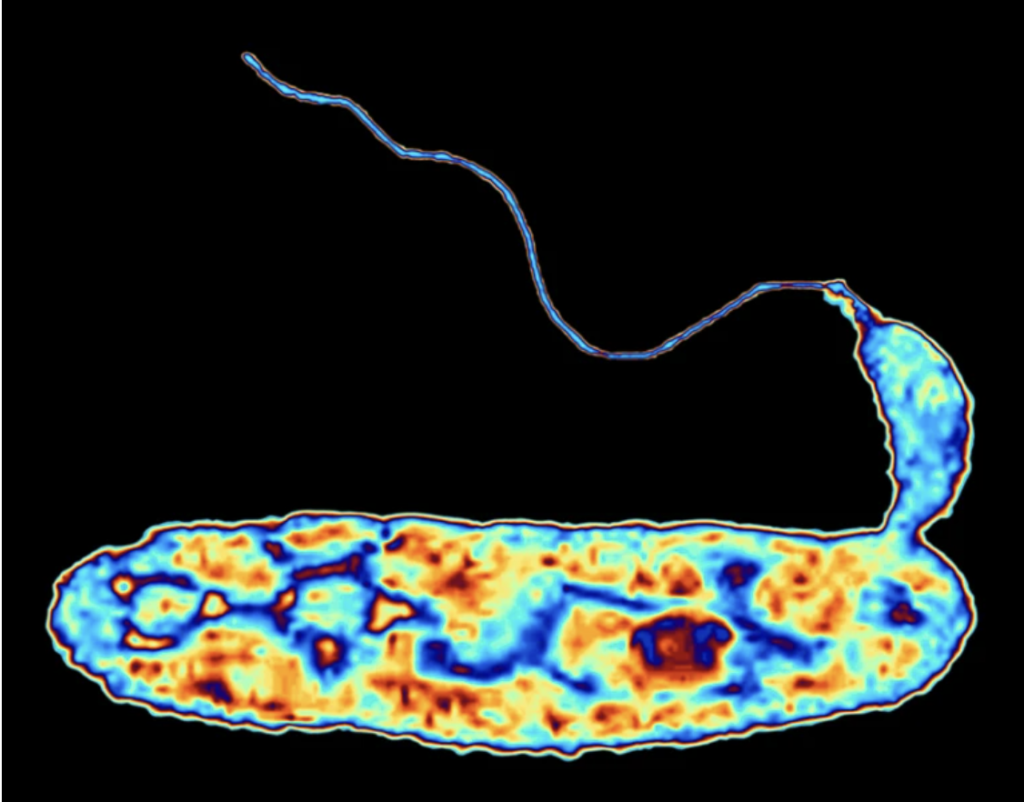Fun Fact: Histones, the DNA-packaging proteins, may be found in bacteria

Fiona Shan | February 6, 2023
Researchers have discovered that the eukaryotic DNA-packaging protein histone, previously thought to not exist in bacterial cells, may also help package bacterial DNA, although in a bizarre way.
Figure to the left: The predatory bacterium Bdellovibrio bacteriovorus infiltrates larger bacteria and digests them from within. Credit: Alfred Pasieka/Science Photo Library
What are histones and what do they do?
Normally found in the cell nuclei of eukaryotic cells, histones are proteins which help organize DNA in the nucleus. Thread-like DNA wraps twice around each histone to form a structure known as a nucleosome. When DNA coding for a specific gene is coiled tightly around a histone, it’s harder for cell machinery to access the DNA and express it than when the DNA is coiled loosely. Thus, histones serve an important role in controlling gene expression.
What did researchers recently uncover?
Unlike eukaryotic cells, bacteria don’t have a nucleus to contain their DNA; additionally, they were thought to use proteins other than histones to package their DNA. However, in a recent, but not yet peer-reviewed publication, researchers have found that bacterial histones do exist. Interestingly, when they analyzed the structure and function of these bacterial histones, the researchers discovered that bacterial histones cover and encase DNA molecules, rather than the other way around.
Why is this finding important?
It is not clear why histones in bacteria interact in this unexpected way. The researchers hypothesize that these bacterial histones may serve a protective role against foreign invaders of bacterial cells. At the moment, future studies, likely using a wide variety of bacteria, are needed to uncover more about these bacterial histones.
